Reef building hard corals in the order Scleractinia are animals that could be mistaken for plants. One of the most common such corals at the Great Barrier Reef is Acropora hyacinthus.
At Myrmidon reef last December, we found ridges replete with these plates in various colours including brown and green.
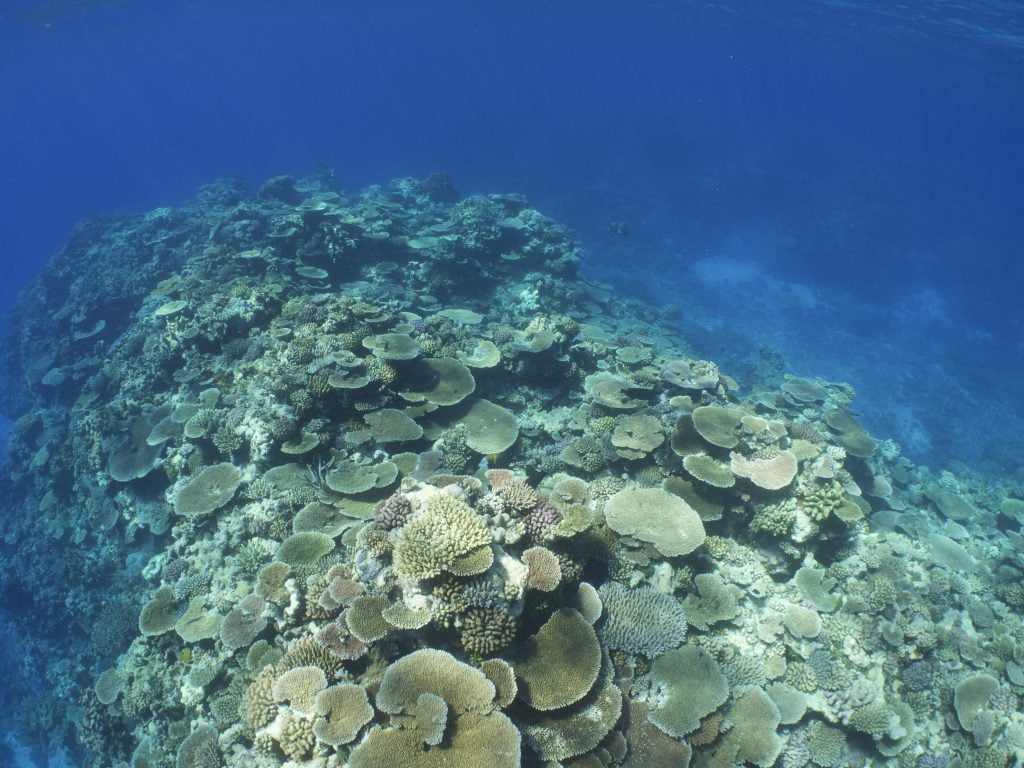
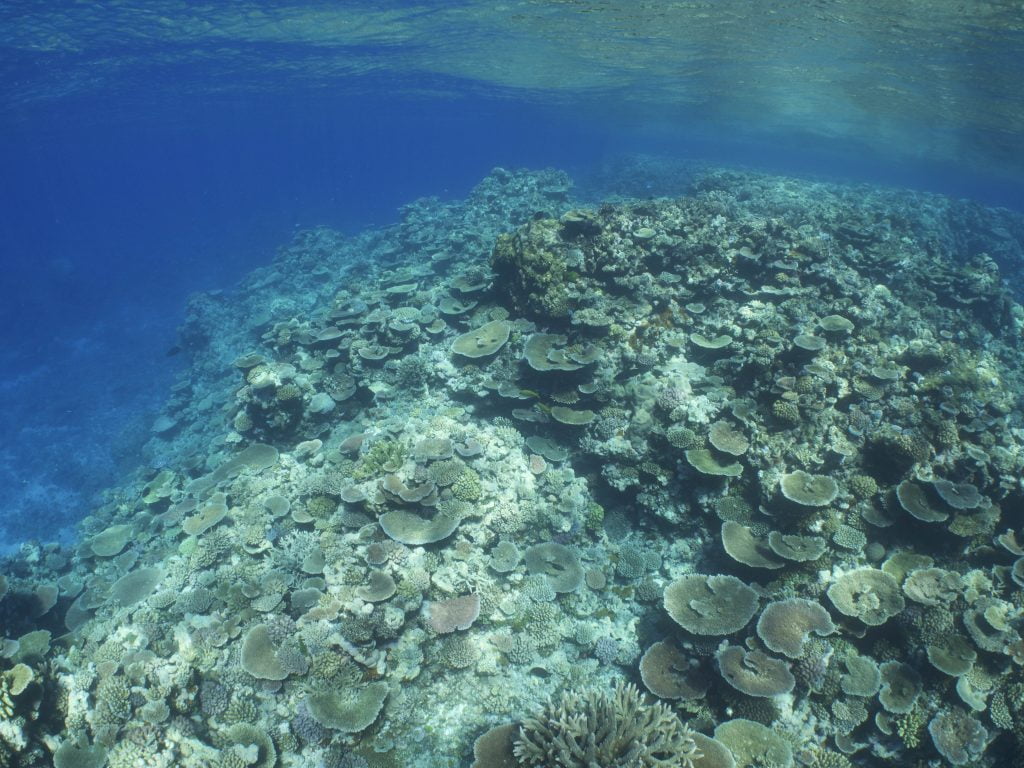
It was in the back lagoon at Russell Island two months later that I took very close-up photographs of this same coral species, including of brown plate corals that very close-up could perhaps be mistaken for a bouquet of pretty yellow flower buds. These ‘flower buds’ are the axial corallites on the ends of upward projecting branchlets. The individual coral polyps are sitting in the cup-shaped radial corallites along the branchlets.
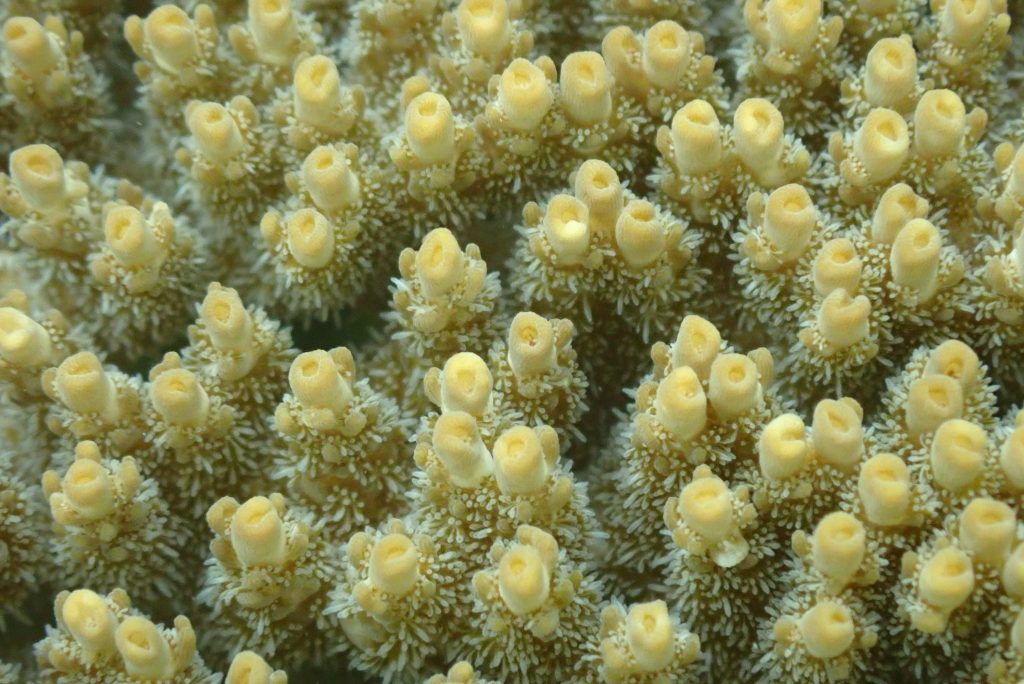
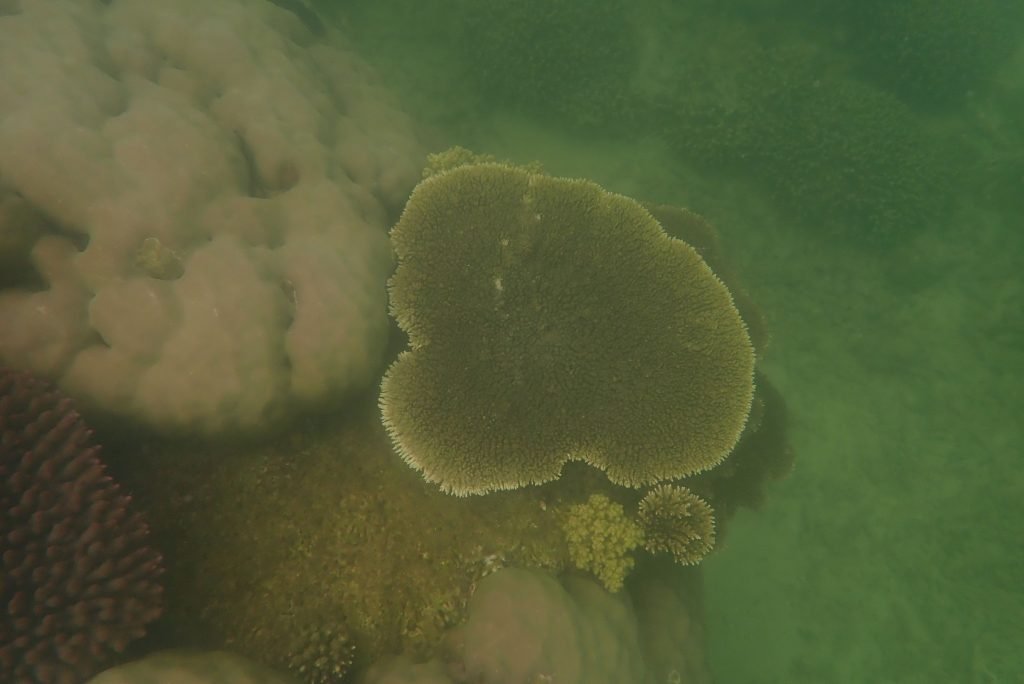
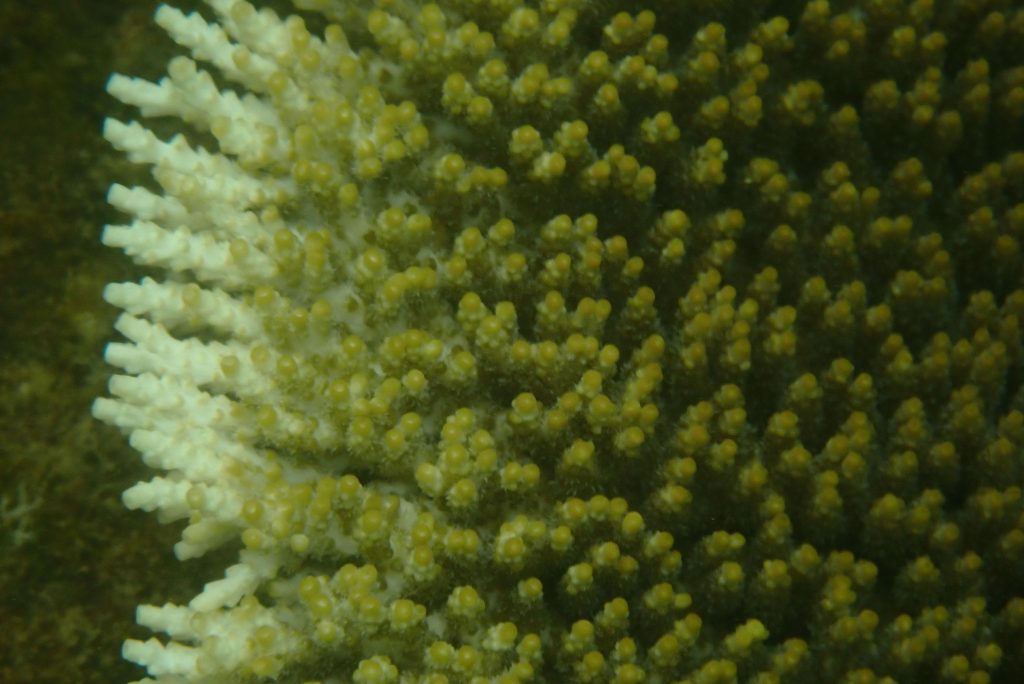
These corals do not look like animals. But like all corals, each of the polyps (within the radial corallites along the branchlets) has animal features: a mouth surrounded by tentacles that can be extended and retracted.
The branchlets are on branches that extend vertically. With age the branches fuse together creating the plates.
Underwater photographer Leonard Lim took 360 photographs along transects at Pixie Reef on 22 and 24th February 2021. Many of the photographs from the habitat that I’ve designated ‘crest’ include plate corals of this species, Acropora hyacinthus. All the photographs can be viewed at the Pixie Reef Data Page 2021.
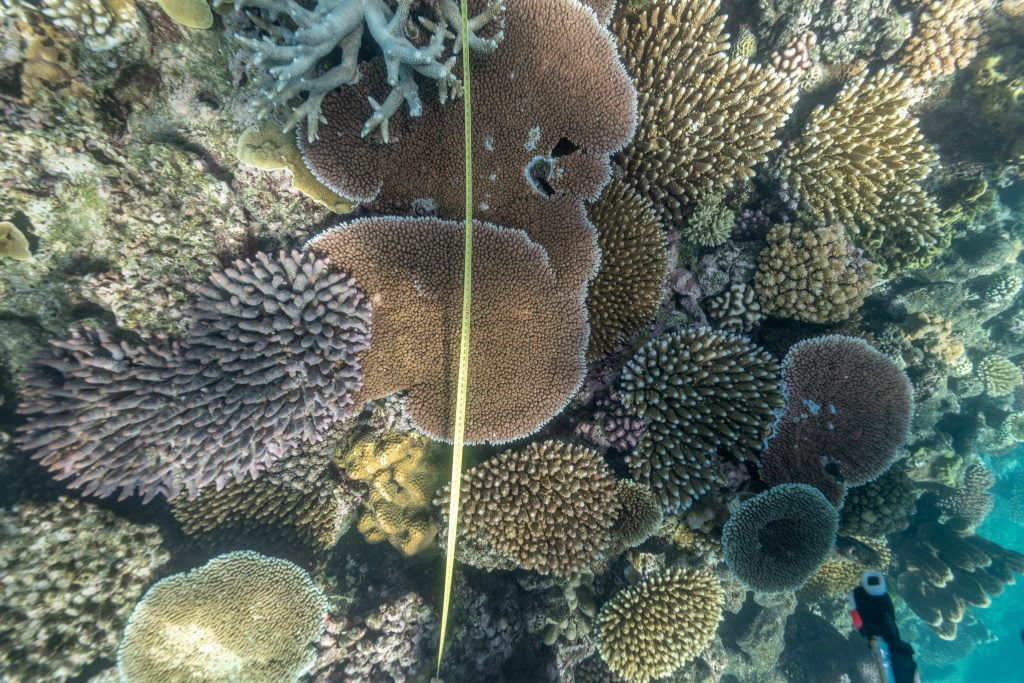
I posted the first two transects photographs at my Facebook page recently (https://www.facebook.com/JenniferMarohasyOfficialPage/ go to 22nd and 23rd March), and I will be posting more in coming weeks. I am planning to quantify not only percentage coral cover from these photographs, but also the percentage of live plate coral in the genus Acropora.
I have complained previously that many of our expert marine biologists are making the most cursory of observations, and then extrapolating from these to arrive at the direst predictions for the entire Great Barrier Reef. One of my issues is that perceptions of the state of the Great Barrier Reef are now based largely on aerial surveys, specifically from 150 metres above coral reefs out of aeroplane windows during fly-pasts by Terry Hughes. I flew my drone at a much lower altitude to film Stuart filming the plate corals at Myrmidon on December 1, 2020. At just 30 metres above sea level it is impossible to see the corals, as I show in this short video, which is less than two minutes long.
**********
The feature image (at the top of this blog post) is of Shaun and Stuart snorkelling at Myrmidon, they were actually searching for Porites spp., while finding plates. We did do scuba, but these were exploratory snorkels to save our air tanks for when we found what we were looking for … old Porites, as explained in a previous blog post.

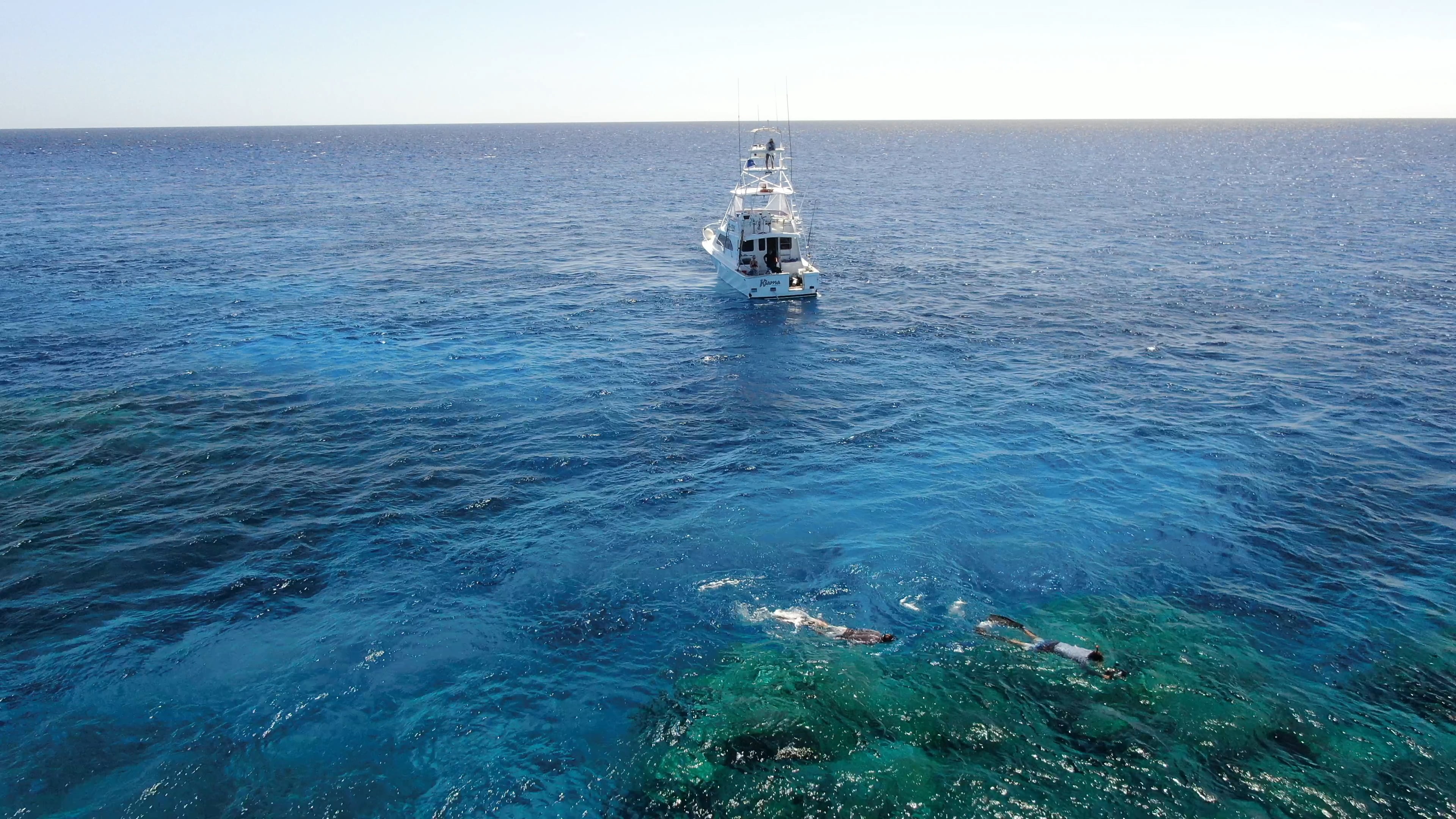
 Jennifer Marohasy BSc PhD is a critical thinker with expertise in the scientific method.
Jennifer Marohasy BSc PhD is a critical thinker with expertise in the scientific method.

As it is difficult to see the state of said corals from a boat. Got to get down and dirty to locate the truth.
It seems that the aerial photos are what they are looking for, ie no coral. Also, If the grant money was spent on proper underwater assessment, then there would be no money for promoting the climate story and also the grant money is likely to dry up if coral was found.
I have often wondered why these people became marine biologists when they appear to have an extreme aversion to getting any where near the actual ocean.
From their behavior it is obvious they prefer playing around with large fish tanks ashore in Townsville, or flying around the place, either to pretend to observe the reef, or to get to conferences where they can discus their fish tank games.
Decades ago, in my 30’s, I used to paint native flora in watercolour. So unique. Now I’m imaging these seascapes painted in the same watery way. These scenes are so mesmerising to me Jen. I recall the sounds of movement under water from when I swam alot. So separate from everything else. I simply can’t comprehend the mind of those who make declarations about something they can not bring themselves to be immersed inside of. They don’t actually adore this place, do they?
Wonderful testimony to the vibrancy and vigour of the GBR ! Congratulations to you and your team on demonstrating the reality of the reef condition
Hi Francis LW,
“They don’t actually adore this place, do they?”
They adore the money and position and their own self importance.
So many fellow Australians would love the opportunity to actually “get down and dirty” in that beautiful place and explore it properly.
As I have said before Jen you are a lucky little bugger.
Choosing the path less traveled has its advantages. A reward for your courage.
Very competent mapping. The detailed photographs of the axial corallites are well placed in the overall mapping mosaic. Nothing compares with empirical evidence – actually looking systematically.
In a connected comment, it does seem that every time in recent history that Sky News advertises an interview with Peter Ridd on the GBR, the “technical gremlins” destroy the interview … video or sound suddenly stops working, golly and gee. One wonders if this pattern is caused by younger technicians deplatforming him by stealth (similar pattern to most hard discussions of climate change), especially as the High Court hearing comes closer.
I agree with all those above; without JM, the world would not know the truth so, Jennifer, please keep snorkelling towards the full exposure of the clowns who covert the glory without the thorns of the crowns sticking them in places they would not care to say.